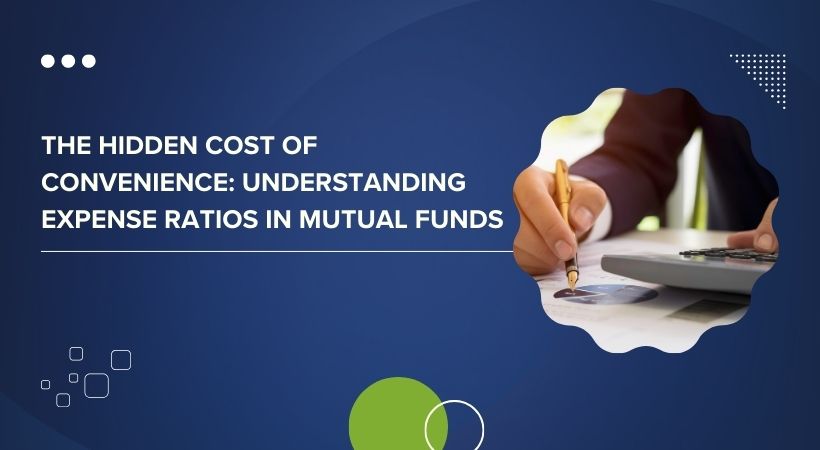When most people invest in mutual funds, their focus is naturally on returns. Which fund is performing the best? What’s the past 5-year CAGR? These are common and valid questions. But there’s a silent destroyer of wealth that often goes unnoticed: the expense ratio.
What is an Expense Ratio?
The expense ratio is the annual fee charged by the Asset Management Company (AMC) to manage your investments. This fee is expressed as a percentage of your total investment and is automatically deducted from the fund’s returns.
For example:
- If a mutual fund earns a gross return of 12% and the expense ratio is 2%, your net return is 10%.
- With a direct mutual fund having an expense ratio of 1%, the same fund would give you 11% net return.
The difference? 1% may not seem like much now, but over time it adds up dramatically.
The Long-Term Impact of Higher Expense Ratios
Let’s break this down with an example:
You invest ₹10 lakhs in an equity mutual fund for 20 years.
Let’s assume the fund delivers a gross return of 12% annually.
Plan Type | Expense Ratio | Net Return | Wealth After 20 Years |
Regular Plan | 2.0% | 10.0% | ₹67.3 Lakhs |
Direct Plan | 1.0% | 11.0% | ₹81.4 Lakhs |
Difference | — | — | ₹14.1 Lakhs |
Yes, you read that right — a ₹14 lakh difference, just because of a 1% lower expense ratio.
Now imagine the impact if you’ve invested ₹25 or ₹50 lakhs over your lifetime. The silent cost of convenience becomes a massive price tag.
Why Are Expense Ratios Higher in Regular Plans?
Regular mutual fund plans are typically distributed through intermediaries like banks, brokers, or agents. These intermediaries receive a commission, which is built into the expense ratio.
On the other hand, direct plans are purchased directly from the mutual fund company—no intermediaries, no commissions. That’s why their expense ratios are significantly lower.
The Illusion of “Free Advice”
Many investors think they’re getting free investment advice when buying funds through their relationship manager or agent. But in reality, that “free” advice is paid for via a higher expense ratio that continues to eat into your returns year after year.
Even worse, the advice isn’t always unbiased—because the intermediary earns commission based on what they sell.
What You Can Do
- Check your fund’s expense ratio.
You can find this in your mutual fund statement or online on the fund house website. - Compare direct and regular plans.
Use tools like ValueResearch or Morningstar to see side-by-side comparisons. - Consider switching to direct plans.
While switching may involve capital gains tax, the long-term benefit of lower expenses usually outweighs this one-time cost.
Conclusion
Convenience has a cost. In mutual fund investing, that cost comes in the form of a higher expense ratio—often hidden and unnoticed, yet hugely impactful over the long term.
Smart investors don’t just chase returns. They also minimize costs. By understanding and acting on expense ratios today, you could retire with significantly more tomorrow.
Author: Swapnil Kulkarni
Co-Founder, PriceBridge – A PMS of Ayan Analytics Pvt. Ltd.
Swapnil is a CNBC TV18 Financial Advisor Award nominee (2010) with over 17 years of experience in wealth management. His core expertise lies in managed mutual fund strategies, with a strong focus on investor education and long-term wealth creation.




